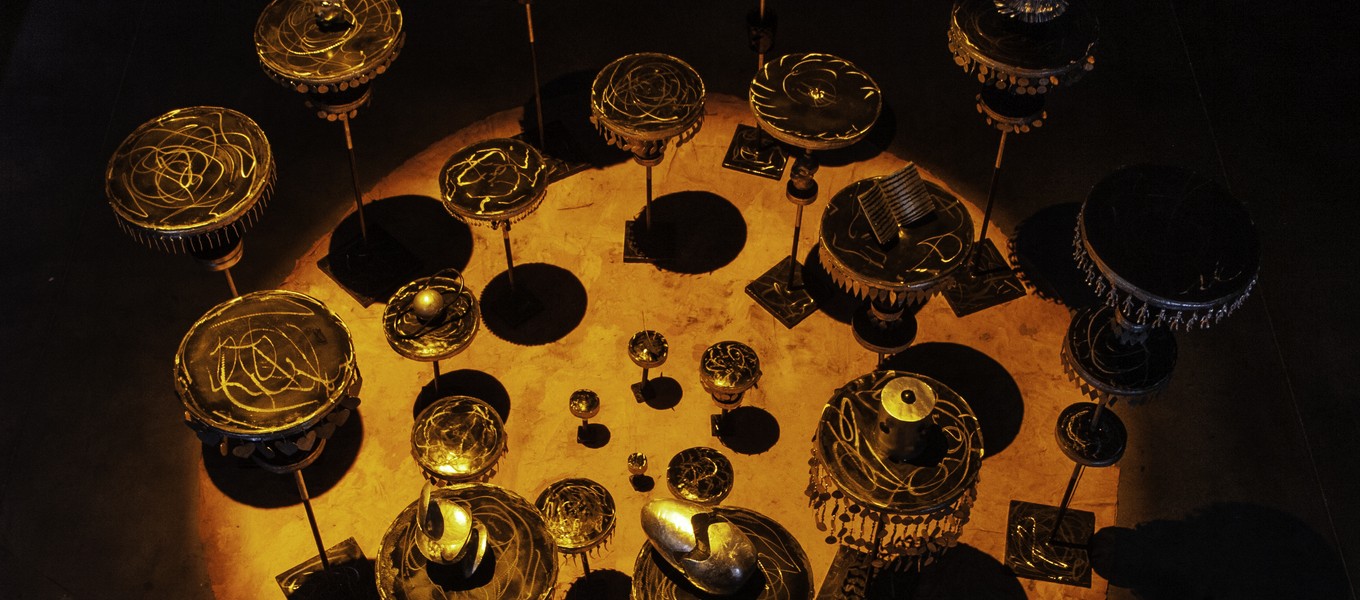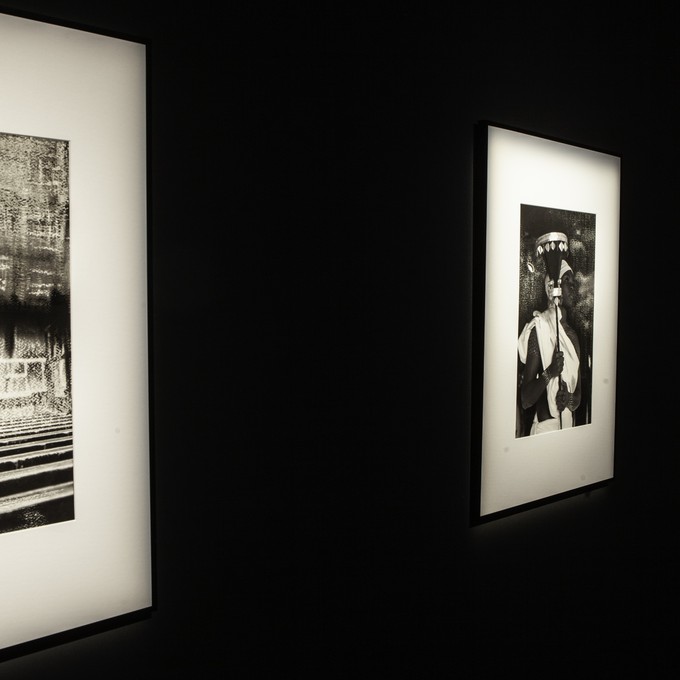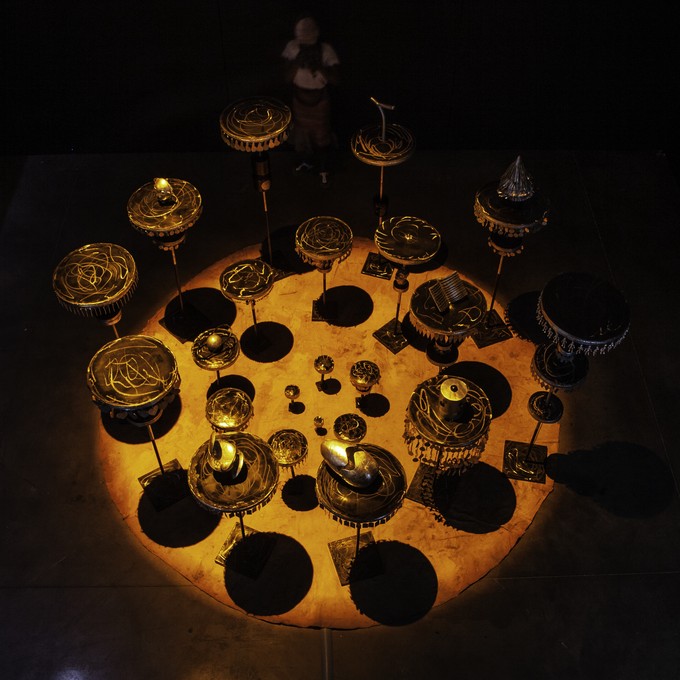Éliane Aisso
Ati okuku dé imolè (De l'invisible au visible) - Installation - 2019
presented as part of the exhibition Panorama 21



Installation
Most cultures around the world have developed specific ways of remembering and keeping a trace of loved ones after death. Some use objects that may be renewed to some degree by artists or craftsmen to trigger memory. Such objects can help prevent the living from letting the memory of the dead lapse into oblivion.
While the place of the deceased and the way they are remembered is specific to each culture, the use of a special object is something that many of them share. Whether fashioned by artists or craftsmen, this object comes to represent the lost being, and serves to keep them from falling into the vertiginous void of forgetting. According to the dahomean tradition in Benin, death is what enables the individual to return to the chain that connects the gods to the living. In fact, this is simply another way of talking about ghosts as the ultimate phase before reincarnation, as in the Buddhist traditions of countries such as India, China, Japan and Korea.
This installation draws visitors into the striking world of “assen” sculptures, which are mobile altars made in wrought iron created in the old kingdom of Dahomey. These are accompanied by captivating statements in which individuals say how they would like to be reincarnated, and by six “indicative” photographs illustrating the connection between the deceased and their reincarnation, between the visible and the invisible.
Éliane Aisso
An artist and photographer, I was born in Benin on 18 April 1989. Holder of the national equivalent of the baccalaureate from the École Supérieure des Métiers Artistiques (ESMA), I considered my studies at the University of Abomey-Calavi, where I obtained an BA and MA in art history. I continue to receive artistic training while pursuing an artistic career. I am currently studying at Le Fresnoy - Studio National des Arts Contemporains in Tourcoing (France).
